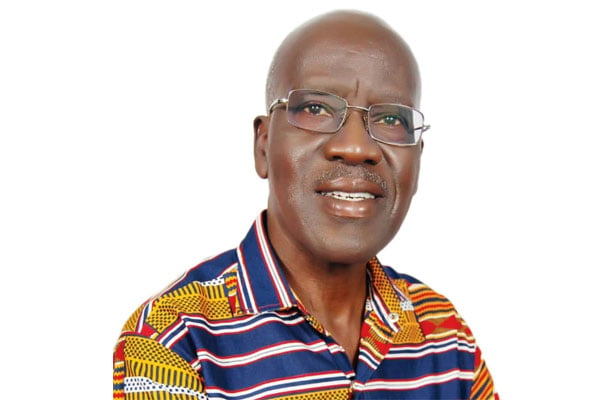When we manufactured water in the lab

Prof Timothy Wangusa
What you need to know:
- In arithmetic, we were taught the lifetime skill of ‘aliquot parts of aliquot parts’, a method of mental work in which you take a mere couple of seconds to multiply given figures (in double or triple digits) via addition and subtraction.
This article is a sequel to my earlier article, entitled ‘High school excitement of learning’, which appeared on February 12 in this esteemed paper.
That excitement was not only in arts subjects but certainly also in science subjects. That was when we also incredulously discovered that a particular subject of study could belong to both the arts and the sciences.
In Geography we were thrilled to learn that there were scientific laws just as there were laws in biology, physics and chemistry. There was, for an intriguing instance, Ferrell’s Law, which states that a wind blowing across the equator is deflected to the right or left depending on the direction it is coming from! And there was the Law of Lapse Fall, according to which the earth’s atmospheric temperature falls by 1 degree Fahrenheit every 100 feet skywards!
From Physics we committed to memory Archimedes’ cry of ‘Eureka!’ that the pioneering scientist uttered upon suddenly receiving a brainwave that resulted into a formulation of ‘The Principle of Floatation’. We were told that Archimedes jumped out of his bath and ran around stark naked shouting his discovery: that ‘an object fully or partially immersed in a liquid displaces a volume of that liquid that is equivalent to the mass of that object’.
And the highest height of all our chemistry and physics practical classes was when we manufactured water! Yes, we manufactured water! Wonder of wonders! We manufactured water in the chemistry lab.
To prove that water is a combination of two gasses, we of my class produced oxygen and hydrogen in two consecutive experiments, and contained them in two separate jars.
Then introducing a jet of the hydrogen into the jar of oxygen, we set a lighted matchstick to the former – and lo and behold, drops of a colourless liquid formed! It was water that we had seen resulting from fire! Eureka! We had manufactured a few drops of water and added them to God’s abundant rainfall and rivers and multitudinous oceans!
In mathematics, we became mobile containers of geometric theorems and algebraic formulas. Towards our final year Cambridge exams, you only had to mention a theorem and out came the definition from another fellow. ‘Pythagoras’ Theorem,’ you called out.
And promptly came the answer, ‘In a right-angled triangle, the square of the hypotenuse is equal to the sum total of the squares of the other two sides.’
Or you asked, ‘What is the difference between a simultaneous equation and a quadratic equation?’ And out came the instant answer about ‘two unknowns’ in the former and ‘three unknowns’ in the latter…
In arithmetic, we were taught the lifetime skill of ‘aliquot parts of aliquot parts’, a method of mental work in which you take a mere couple of seconds to multiply given figures (in double or triple digits) via addition and subtraction. [For instance, to multiply 17 by 25: your first add 3 to 17 to give you 20, a simpler number to multiply by; 20 x 25 gives you 500 in a twinkling, from which you take a split second to subtract 75 (= 25 x 3) – 3 being the number that was added to 17 to yield the easier 20 – and you instantly obtain your 425].
Then, most unexpectedly, in the penultimate term of our four-year academic pursuit, after covering the final topic in the arithmetic syllabus (on compound interest), our ingenious mathematics teacher made a most startling announcement to our class – ‘And now, ladies and gentlemen, you have finished doing all the arithmetic there is.’
What! What an incredible achievement! Surely he meant that we had finished doing all the arithmetic there was on the syllabus and in the world! And we looked at one another in fantastic self-congratulation!
‘Then felt I like some watcher of the skies/ when a new planet swings into his ken…’ (From John Keats’ poems – in my breast pocket)…Aya-ya-ya-ya!
Prof Wangusa is a poet and novelist.
[email protected]


